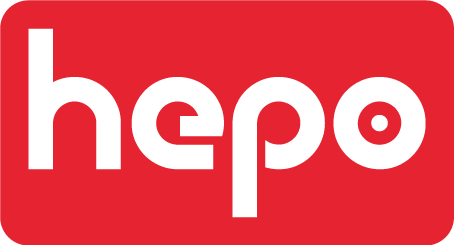PRODUCT RELATIONAL DATA MODULE
Overview
Building a
Comprehensive, Interconnected Product Profile
The
Relation Module within HEPO PIM serves as a sophisticated framework to create a
connected, multi-dimensional profile for each product, linking it to relevant
categories, features, media, associated individuals, companies, and tags. This
module transforms isolated product specifications into part of a larger,
interconnected ecosystem, providing depth and context to each product profile.
By enabling products to be linked with various business-relevant attributes,
the Relation Module aligns seamlessly with HEPO’s goal of holistic, reliable
product data management that drives cross-functional utility and strategic
alignment.
Purpose of the Relation
Module
The
Relation Module is designed to provide a complete, context-rich view of each
product by integrating it into a network of information. Through dynamic
relationships with categories, features, media, web presence, people,
companies, and tags, it creates a well-rounded product profile. This structure
supports both internal efficiency and customer-facing detail, elevating
products from simple entries to comprehensive, interactive resources for
decision-making, marketing, and customer engagement.
Example:
For a book, the Relation Module can link it to a primary category (e.g.,
“Fiction”), managerial categories (e.g., “Bestsellers,” “New Releases”),
authors, publishers, key features (e.g., “Page Count,” “Genre”), and
descriptive tags (e.g., “Mystery,” “Adventure”). It can also house media, such
as book covers, previews, and related videos, enriching the product’s profile
with diverse, relevant content.
Key Components of the
Relation Module and Their Strategic Roles
Category Assignments for
Flexible Organization
Main
Category: Anchors each product with a primary category that defines its
essential features. This main category serves as the foundational layer for the
product’s detailed profile.
Additional
Categories: Provides flexibility, enabling products to be grouped in multiple
secondary categories for organizational and reporting needs. For instance, a
product can belong to seasonal categories, geographical regions, or
promotion-based groupings.
Benefit:
This dual-category system supports both hierarchical and lateral
classification, allowing products to be efficiently managed across various
contexts without data duplication.
Feature Associations for
Detailed Comparisons
Predefined
Feature Values: Allows input of feature values that align with the product’s
main category, adding structure to the product profile and enhancing search,
filter, and comparison functionalities.
Benefit:
This structured approach ensures consistent data entry across products within
the same category, enabling uniform comparisons and boosting data quality and
clarity.
Media Management for Rich
Visual Context
Types of
Media: Includes images, videos, files, and documents directly related to the
product, providing multi-dimensional content options.
Benefit:
Media-rich profiles cater to different user needs, enhancing customer
engagement and supporting both internal training and customer interaction with
resources such as instructional videos or product sheets.
Web and Social Media Links
for Digital Presence Integration
Purpose:
Allows seamless integration of web, email, and social media information
directly within the product profile, making the digital presence readily
accessible.
Benefit:
Consolidating digital resources ensures a cohesive marketing experience across
channels, providing customers with direct links to additional online content
and maintaining a consistent brand message.
People and Company
Associations for Contextual Depth
People:
Links individuals (e.g., authors, designers) to products, adding a personal
dimension to the product’s profile. This is beneficial for products where the
creator’s identity or expertise enhances its appeal.
Companies:
Associates relevant companies (e.g., manufacturers, distributors) with each
product, providing context for customer trust and supply chain visibility.
Benefit:
These associations enhance the product’s narrative, building customer
engagement through transparency and providing valuable insights for logistics
and compliance teams.
Tags for Enhanced Search
and Targeted Grouping
Purpose:
Tags allow additional, flexible grouping and categorization of products, such
as by keywords or thematic labels (e.g., “Sustainable,” “Holiday Collection”).
Benefit:
Tags enable refined filtering, reporting, and marketing segmentation,
supporting targeted campaigns and dynamic groupings without disrupting the core
category structure.
Benefits of the
Relation Module for Businesses and Customers
Enhanced Product
Discoverability
With robust
category, feature, media, and relational associations, the Relation Module
significantly improves searchability. This interconnected data structure allows
products to be easily surfaced across various channels and contexts, ensuring a
streamlined experience for both internal users and customers.
Engaging, Customer-Focused
Product Profiles
The
combination of rich media, detailed feature descriptions, and personal/company
associations creates an engaging, multi-faceted product page that resonates
with customers. This enhances the customer journey by providing clear, in-depth
information, strengthening customer trust, and fostering brand loyalty.
Streamlined Data
Management and Efficiency
By
centralizing various product elements—such as categorization, feature
associations, media, and relational data—within one module, the Relation Module
simplifies product management. This centralization reduces data silos and
increases efficiency, making it easier for teams to manage product profiles
cohesively.
Cross-Functional
Accessibility
This
module’s structure supports multiple business functions, from marketing and
sales to customer support and logistics. Each department can draw on the
Relation Module’s comprehensive product profile to serve specific needs,
creating a unified resource that bolsters cross-functional alignment and
communication.
Strategic Tagging for
Dynamic Campaigns
With tags
that allow for nuanced grouping, the Relation Module enables companies to
tailor their products for seasonal promotions, specific market segments, or
unique attributes. This flexibility is invaluable for strategic marketing,
allowing teams to launch targeted campaigns without altering core data
structures.
The
Relation Module in HEPO PIM is an essential tool that centralizes and organizes
a product’s associations with categories, features, media, online links,
people, companies, and tags. This interconnected approach enhances customer
engagement, supports seamless internal management, and aligns with HEPO’s
mission to offer intelligent, holistic product data solutions. By transforming
product profiles into dynamic, cross-functional resources, the Relation Module
meets the needs of both internal stakeholders and end users, embodying HEPO’s
goal of data integrity, transparency, and strategic relevance in product
management.
